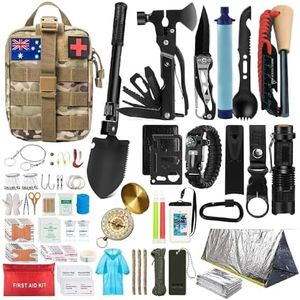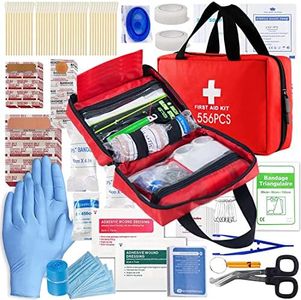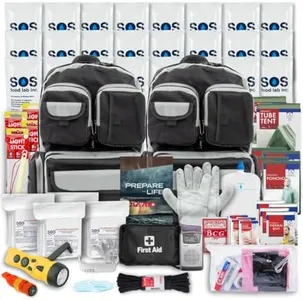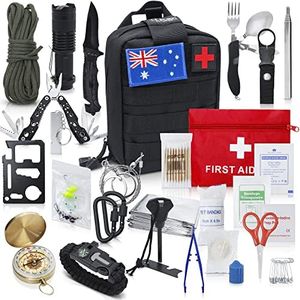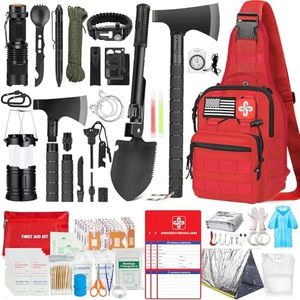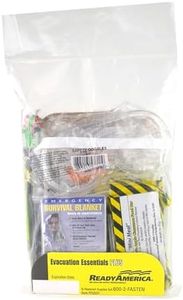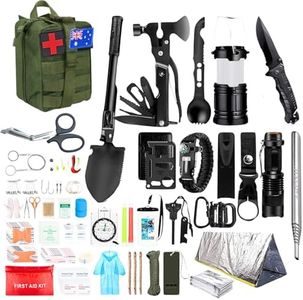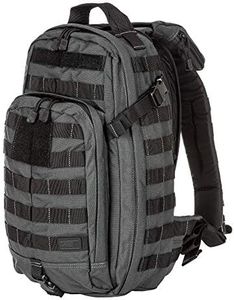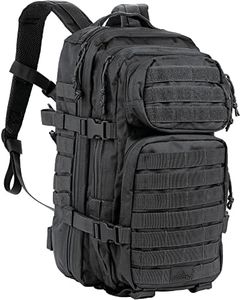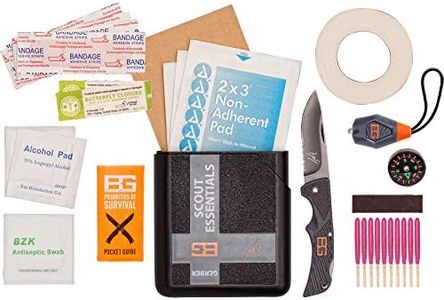We Use CookiesWe use cookies to enhance the security, performance,
functionality and for analytical and promotional activities. By continuing to browse this site you
are agreeing to our privacy policy
10 Best Bug Out Bag Kit
From leading brands and best sellers available on the web.Buying Guide for the Best Bug Out Bag Kit
Choosing a bug-out bag kit is all about planning for the unexpected—whether it's a natural disaster, emergency evacuation, or just being prepared for anything life throws your way. The right kit can make a huge difference in your safety and comfort. When picking out a kit, consider your personal needs, local climate, and the most likely emergencies you might face. The goal is to find a balanced kit that covers essential needs without being too heavy or complicated to use. It's important to think about who will use the kit (just you, or your family?), how long you might need to survive with its contents, and how comfortable you are using the supplies inside.Bag Size and CapacityBag size determines how much you can carry and directly affects your mobility. A smaller bag is lighter and easier to carry but may not have room for everything you need, while a larger one lets you pack more supplies but can get heavy and unwieldy. Typically, a bag in the 30–50 liter range offers enough space for basic necessities without being excessively bulky. If you only need essentials for one person for a day or two, a smaller bag is enough. For multi-day emergencies or for families, consider a larger size, but always make sure you can comfortably carry your fully packed bag.
Emergency Food and WaterEvery kit should include food and water adequate to sustain you for at least 72 hours. Food is typically in the form of calorie-dense bars or freeze-dried meals, which are lightweight and have long shelf lives. Water is often packed as pouches or bottles, and may be supported by water purification tablets or filters. If you’re in an area with uncertain water sources, prioritize purification options. For food, consider any allergies or dietary needs. The rule of thumb is at least 1 liter of water per person per day.
Shelter and WarmthShelter gear covers items like tents, emergency blankets, and sleeping bags. These protect you from cold, rain, and wind. Kits often include compact mylar blankets because they’re light and pack small, but if you live in a very cold area or want more comfort, look for higher-quality sleeping bags or bivvy sacks. The choice depends on your climate and whether you’ll shelter outdoors or indoors—urban dwellers may use less than those in rural or extreme environments.
First Aid SuppliesA basic first aid kit is a must, containing bandages, antiseptic wipes, pain relievers, and more. Some kits offer more comprehensive supplies including trauma items like tourniquets and splints. It's important to pick a kit that matches your skill level: if you have basic first aid knowledge, a starter kit is fine, but if you’re trained, you may appreciate more advanced supplies. Think about any personal medications that may need to be added.
Tools and Multi-Use ItemsTools such as knives, multi-tools, fire starters, and flashlights add versatility and self-reliance to your kit. Pay attention to the quality and reliability of these tools—cheap ones may fail in a real emergency. The specific types of tools you need depend on your skills and anticipated situations: rural or wilderness environments demand more robust tools than urban ones. For most people, a sturdy multi-tool and reliable flashlight are minimum essentials.
Communication and NavigationBeing able to call for help or find your way is crucial. Kits may include whistles, emergency radios, or basic maps and compasses. If you live in an area prone to power outages or where cell service might fail, having a battery-powered or crank radio and analog navigation tools becomes important. The right balance depends on where you'll use the kit and how comfortable you are with navigation.
Personal Hygiene and SanitationStaying clean helps prevent illness and keeps you comfortable. Kits may contain wet wipes, compact towels, soap, or even small trowels for digging latrines. Think about your needs: if you’re likely to be outdoors for days, make sure your kit covers basic hygiene. Some people may want additional items like menstrual supplies or masks—customize your kit as needed.
